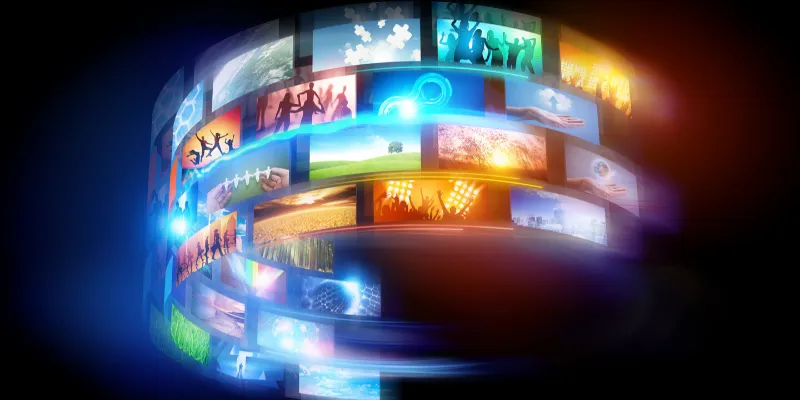Here’s how technology is affecting the media industry
When it comes to the media industry, technology has a bearing on every aspect of the process — from changes in production to the OTT platforms.
When the phrase ‘time and tide wait for none’ was coined, someone forgot to add ‘technology’ to the pleasing alliteration. Technology is no less than a living thing, speeding ahead in its evolution, and we see the results everywhere — the ever-slimming smartphone, high-resolution content, and the dusty, forgotten floppy disk buried in the drawer.
When it comes to the media industry, technology has a bearing on every aspect of the process, and every shift is done deliberately and sees an immense difference.

Changes in the media industry
For example, take lighting. We find ourselves choosing LED over the warm glow of Tungsten bulbs. With far lower operating temperatures, LED lights are much easier to adjust and are more convenient.
The industry has seen a shift from tapes to hard disks, from film cameras to digital. This choice has eased costs, reduced film wastage, smoothened shooting, and editing procedures. Hard disks also offer a secure and convenient back-up experience, allowing for quick access, back-ups, and restores.
Behind it all, the growth of Electronic Design Automation has eased the technician’s job of hand-creating circuits and electronic systems. Automation further allows for universality in design and minimal error.
Changes on screen
While not all may be privy to how technology has blessed our content ‘behind the scenes,’ it is becoming exceedingly clear how it is helping enhance our screens. High Definition (1080p) content has spoilt us with its natural colouring and quality.
We may even take it for granted, and yet the transition from SD to HD is an ongoing phenomenon. In fact, the overuse of the internet because of the pandemic has seen many streaming services switching back to SD content to handle the load.
If we are to display high-resolution content, naturally, we must use devices that support it. LED walls are increasingly being favoured over projectors for this very reason. Many of us are used to giving presentations or watching movies with the projector beaming the content on nothing but a faded white wall. Dimming brightness, sunlight, and physical obstructions all quite literally got in the way of good viewing, however, LED walls have none of these problems.
Reality
Perhaps the greatest gift technology, and media, have bestowed upon us is the ability to create, indulge, and share our realities. And, what constitutes a worthwhile reality?
A virtual reality (VR) specialist would say — immersion and interactivity — the two pillars on which stand the art and science of creating entire worlds from computer-generated information.
VR is strongly associated with gaming or media and entertainment, but its uses are truly endless. It has been employed in the fields of health, mental health, military, and even architecture.
Unlike VR, augmented reality (AR) does not construct entire worlds to get lost in. Rather, it brings digital information to our everyday lives. Perhaps the most popular example is of PokemonGo – a game in which players caught Pokemon in their immediate surroundings.
As higher internet speeds become a reality, experts expect AR and VR to become more accessible and commonplace.
OTT
Netflix, Amazon Prime, Hulu, Disney+Hotstar — these names arise at the tip of our tongue and open at the tap of a finger.
One of the key trends redefining media and media consumption is Over-The-Top platforms — direct-to-consumer streaming services — that deliver content via the Internet. For urban consumers with high-speed internet and large wallets, OTT is not just a viewing platform, but a way of life — whether it is educating yourself through documentaries or “binge-watching” entire series at a time (and then desperately waiting for the next season).
As internet connectivity spreads across the country, and more companies launch their own OTT platforms, content creators find themselves with shining opportunities to reach their audiences. Multinational companies are also setting aside large amounts to commit to Indian content, including regional language content.
This is not to say that OTT will wipe out traditional television or movie theatres. In fact, television subscription is expected to stay dominant. According to a research conducted by PwC, India’s TV advertising business is likely to reach $6.7 billion in 2023.
Without a doubt, it is an incredibly exciting time to be in the content creating and production business. Technological advancements buzz with ‘convenience,’ as the number of creators grows, and the media industry opens its doors to finer quality and more inclusive content than ever before.
Edited by Suman Singh
(Disclaimer: The views and opinions expressed in this article are those of the author and do not necessarily reflect the views of YourStory.)








